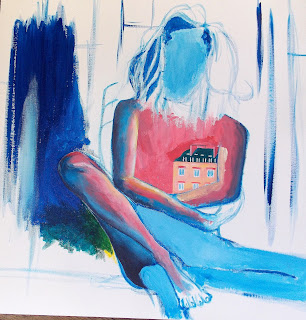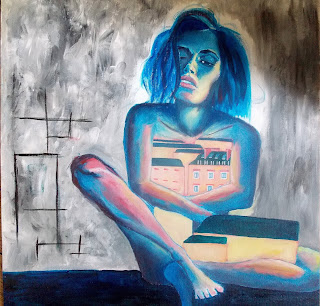"Be yourself. Life is precious as it is. All the elements for your happiness are already here. There is no need to run, strive, search, or struggle. Just be."
~ Thich Nhat Hanh
the gift she gave me
maddie rhondeau
Different things.
Grateful first.
Regretful second.
Never fully take it in.
Never fully take it in.
Scared lastly.
Pending responsibilities at home.
Selfishly hoping.
To see a change.
More worldly?
More interesting?
Maybe just happier.
I don't know.
Nowadays how am I?
Too judgmental about the wrong things.
Give the right people a chance.
The ill-advised.
I don't have time for anymore.
My resolution.
About being alone.
Forgot what it was like.
I missed it.
I need it.
Train was delayed.
Group of Americans.
Running.
A month ago.
Me.
Terrified.
Nervous.
Ready for a change.
The girls are gone.
Back in the states.
So I sat alone.
Watched the Parisians.
Curse loudly.
Gaze blankly.
I liked it that way.
Strangely enough.
Sitting alone.
Staring out the train window.
Sophia Coppola sketch.
I found what you gave me.
It had that quote on it.
My nineteenth birthday.
I cried.
Applicable to the moment.
What I've learned here.
This sentiment.
To live alone.
To create alone.
To learn alone.
To experience and enjoy alone.
And to be satisfied.
That is not a failure.
I don't have time for anymore.
My resolution.
About being alone.
Forgot what it was like.
I missed it.
I need it.
Train was delayed.
Group of Americans.
Running.
A month ago.
Me.
Terrified.
Nervous.
Ready for a change.
The girls are gone.
Back in the states.
So I sat alone.
Watched the Parisians.
Curse loudly.
Gaze blankly.
I liked it that way.
Strangely enough.
Sitting alone.
Staring out the train window.
Sophia Coppola sketch.
I found what you gave me.
It had that quote on it.
My nineteenth birthday.
I cried.
Applicable to the moment.
What I've learned here.
This sentiment.
To live alone.
To create alone.
To learn alone.
To experience and enjoy alone.
And to be satisfied.
That is not a failure.


















































